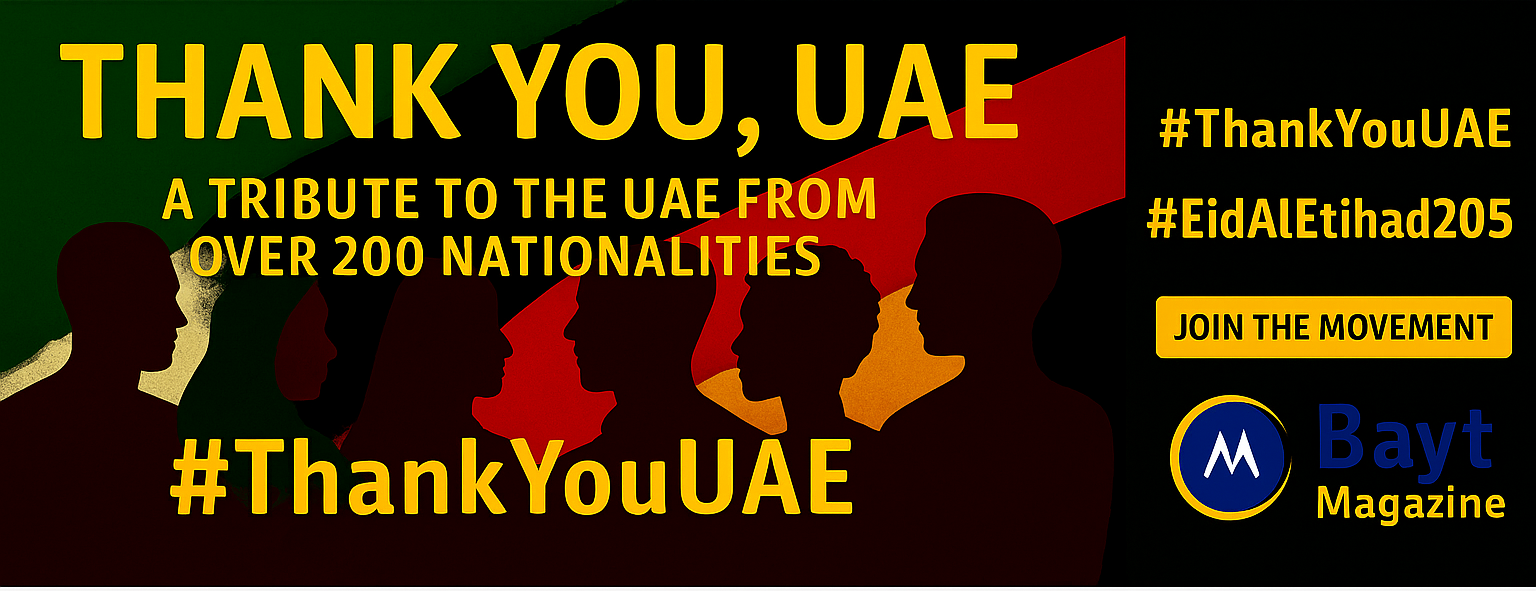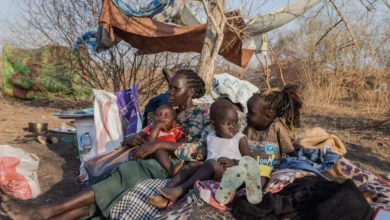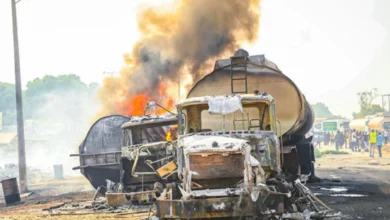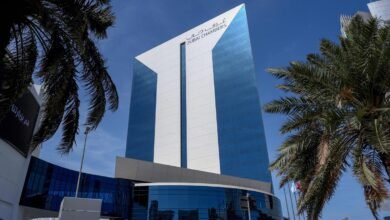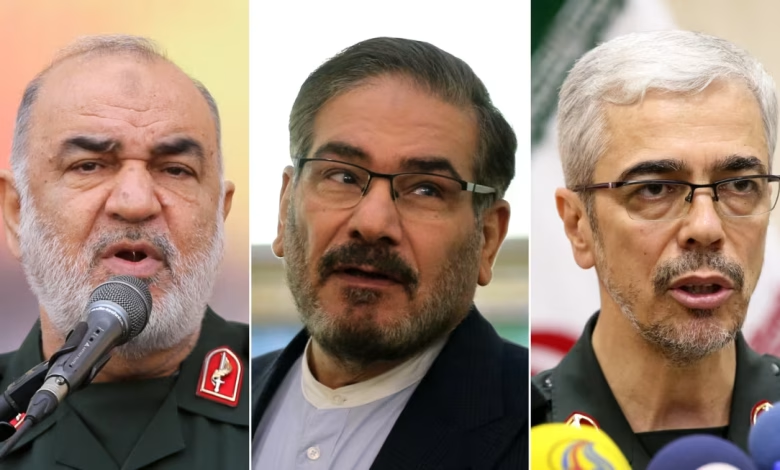
Israeli Precision Strikes Hit Iran’s Most Powerful Leaders
Israeli military strikes killed at least 20 senior Iranian commanders. Major General Hossein Salami, the commander-in-chief of the Islamic Revolutionary Guards Corps (IRGC), was among the casualties. The attacks claimed the lives of six nuclear scientists and struck Iran’s main nuclear enrichment facility at Natanz. This marks the most extensive military assault Iran has experienced since the Iran-Iraq war in the 1980s.
The Israeli Defense Forces launched “Operation Rising Lion” after negotiations about Iran’s advancing nuclear program failed. Their primary goal was to dismantle Iran’s nuclear infrastructure. The strikes successfully eliminated General Amir Ali Hajizadeh, who led the IRGC’s Aerospace Force, and Major General Mohammad Bagheri, chief of staff of Iran’s armed forces. This dealt a devastating blow to Iran’s military leadership. Israeli Prime Minister Benjamin Netanyahu declared these operations would persist until they eliminated the Iranian threat to Israel’s survival. Iran’s Supreme Leader has promised “harsh punishment” and responded by launching about 100 drones toward Israel.
Israel kills top Iranian commanders and scientists
Israeli airstrikes dealt a devastating blow to Iran’s military command structure. The attacks eliminated several top figures beyond those listed in the original reports. The strikes killed Brigadier General Amir Ali Hajizadeh, who commanded the IRGC Aerospace Force for 16 years and developed Iran’s missile and drone programs. Israeli fighter jets struck his underground command center. Major General Mohammad Bagheri, Iran’s armed forces’ chief of staff and second-highest commander after Ayatollah Khamenei, also perished in the attack.
Iranian state television confirmed the death of Major General Gholamali Rashid, deputy commander-in-chief of the armed forces. The Islamic Revolutionary Guard Corps called the attack a “brutal and terrorist act” that killed many IRGC members and their leadership.
The precision strikes claimed six prominent nuclear scientists’ lives. Fereydoun Abbasi-Davani, who led Iran’s Atomic Energy Organization (2011-2013) and served as a parliament member, was among the casualties. Mohammad Mehdi Tehranchi, a theoretical physicist and Islamic Azad University’s president in Tehran, also died in the attack. The strikes killed four more scientists: Abdolhamid Minouchehr (head of nuclear engineering at Shahid Beheshti University), Ahmad Reza Zolfaghari (nuclear engineering professor), Amirhossein Feghi (deputy head of the Atomic Energy Organization), and Motalibizadeh.
General Salami had warned that Iran would “open the gates of hell” if attacked. He declared just one day before the strikes that Iran was “fully ready for any scenarios, situations, and circumstances”. The coordinated Israeli operation successfully targeted these figures in what seems to be a calculated decapitation strike against Iran’s military and nuclear leadership.
The Israeli military validated these deaths and stated, “These are three ruthless mass murderers with international blood on their hands. The world is a better place without them”.
Israel targets nuclear and military infrastructure
Image Source: China Daily
Israeli jets launched Operation Rising Lion in Iranian airspace and targeted key nuclear and military sites across the country. The strikes focused on Iran’s main nuclear site, the Natanz uranium enrichment facility, where underground installations suffered heavy damage.
“The underground area of Iran’s Natanz facility was damaged. This area contains a multi-storey enrichment hall with centrifuges, electrical rooms and additional supporting infrastructure,” the Israeli Defense Forces (IDF) stated. Black smoke rose from the complex after the strikes, suggesting major damage. The International Atomic Energy Agency (IAEA) later confirmed Natanz as one of the targets hit.
The operation involved 200 Israeli fighter jets that struck more than 100 targets across Iran. Israel’s military successfully destroyed many radar installations and surface-to-air missile launchers in western Iran. These strikes created temporary air corridors needed for the operation.
The attacks went beyond Natanz and hit ballistic missile factories and programs. “We struck at the heart of Iran’s ballistic missile program,” Netanyahu declared in his televised address. Some nuclear sites remained untouched—Iranian officials told the IAEA that Fordow enrichment plant, Isfahan research site, and Bushehr nuclear power plant were not damaged.
Israeli officials backed the operation with intelligence reports. Military officials revealed that Iran had “enough material to make 15 nuclear bombs within days”. Netanyahu explained that Iran was close to weaponizing enriched uranium: “If not stopped, Iran could produce a nuclear weapon in a very short time. It could be a year. It could be within a few months, less than a year”.
The IAEA found no radiation level increases at Natanz despite the damage. The agency’s chief, Rafael Grossi, said he was ready to visit Iran to get a full picture while his team monitored radiation levels at the affected sites.
Iran and global leaders respond to Israeli strikes
Image Source: CSIS
Iran launched approximately 100 drones toward Israel as a response to Israeli military strikes. Air raid sirens sounded throughout the country. Iran’s Supreme Leader Ayatollah Ali Khamenei vowed a “harsh punishment” for Israel and declared that the Jewish state had “prepared for itself a bitter, painful fate”. The Iranian President Mahsoud Pezeshkian promised “a severe, wise and strong answer” and stated that Iran “will not remain silent in the face of this crime”.
President Donald Trump sent a warning to Iran to “make a deal, before there is nothing left.” He cautioned that “the next already planned attacks being even more brutal” could end the escalating conflict. The U.S. administration quickly distanced itself from Israel’s operation. Secretary of State Marco Rubio emphasized, “We are not involved in strikes against Iran and our top priority is protecting American forces in the region”.
Middle Eastern reactions strongly criticized Israel’s actions. Saudi Arabia denounced the “heinous” Israeli attacks that “violate its sovereignty and constitute a blatant breach of international laws”. Turkey’s President Recep Tayyip Erdoğan called the strikes a “clear provocation that disregards international law”. Iraq, Qatar, and the UAE also issued statements condemning the Israeli operation.
European leaders urged for peace and stability. EU foreign policy chief Kaja Kallas called on “all parties to exercise restraint and prevent further escalation”. British Prime Minister Keir Starmer voiced his concern and urged “all parties to step back and reduce tensions urgently”.
The escalating situation created immediate economic ripples. Oil prices surged more than 4% due to market fears about possible disruptions to Middle East oil supply. Iran, Iraq, and Jordan closed their airspace. Major carriers including Lufthansa and Qatar Airways suspended their regional flights.
China expressed “deep concern” about the potential risks and offered assistance to ease tensions. Russia condemned what it called a “sharp escalation” in tensions. The African Union demanded an “immediate cessation of hostilities”.
Israeli strikes against Iran mark their biggest military face-off in decades. Without doubt, killing top IRGC commanders, including Major General Salami and Brigadier General Hajizadeh, has crippled Iran’s military leadership. The deaths of six nuclear scientists have weakened Iran’s nuclear program capabilities, while damage to the Natanz facility directly affects uranium enrichment operations.
Netanyahu’s government shows no signs of stopping these operations until Iran’s threats decrease, whatever the international pressure says. Iran’s quick drone response and threats of “harsh punishment” point to more conflict ahead. The Supreme Leader’s words hint that Iranian military planners are ready to hit back harder than their first drone attacks.
World reactions show how complex this standoff really is. Middle Eastern countries slammed Israel’s actions, while Western powers asked for restraint. This split shows how worried the region is about growing conflict. Oil prices shot up quickly, showing how military actions turn into money problems for countries worldwide.
Killing Iran’s military leaders and nuclear scientists, plus damaging their facilities, helps Israel reach its goal of slowing down Iran’s nuclear program. All the same, past events prove that such attacks often make countries more determined, not less. Iran will likely speed up rebuilding while looking for ways to strike back differently.
These events open a dangerous new chapter in Middle East relations. Targeting leaders instead of just buildings takes things to a whole new level and makes peace talks harder. Both sides need to calm down, or the region might face a bigger conflict that reaches way beyond Israeli and Iranian borders.


